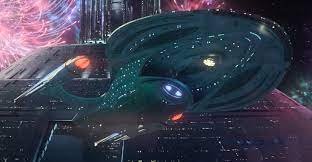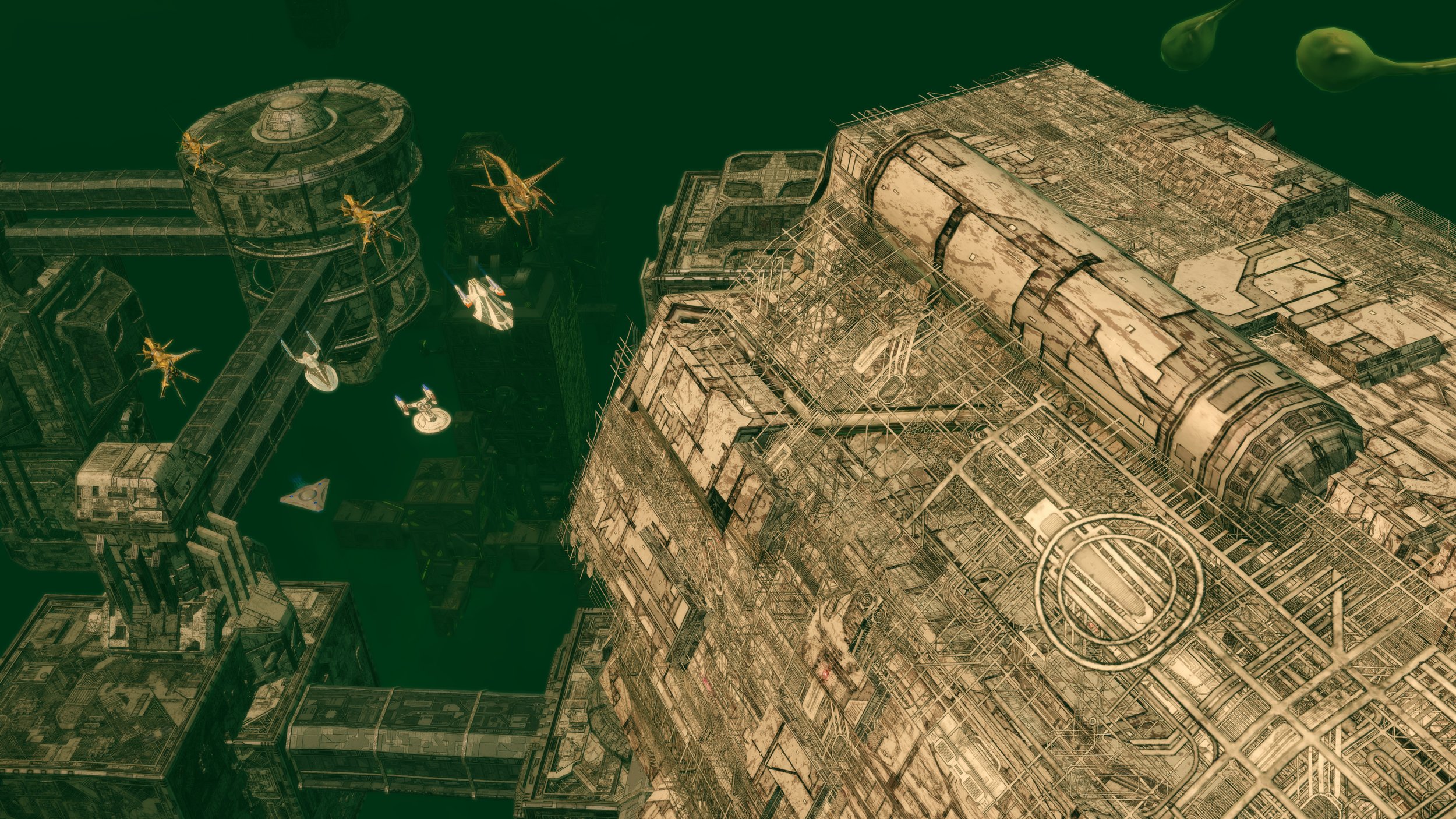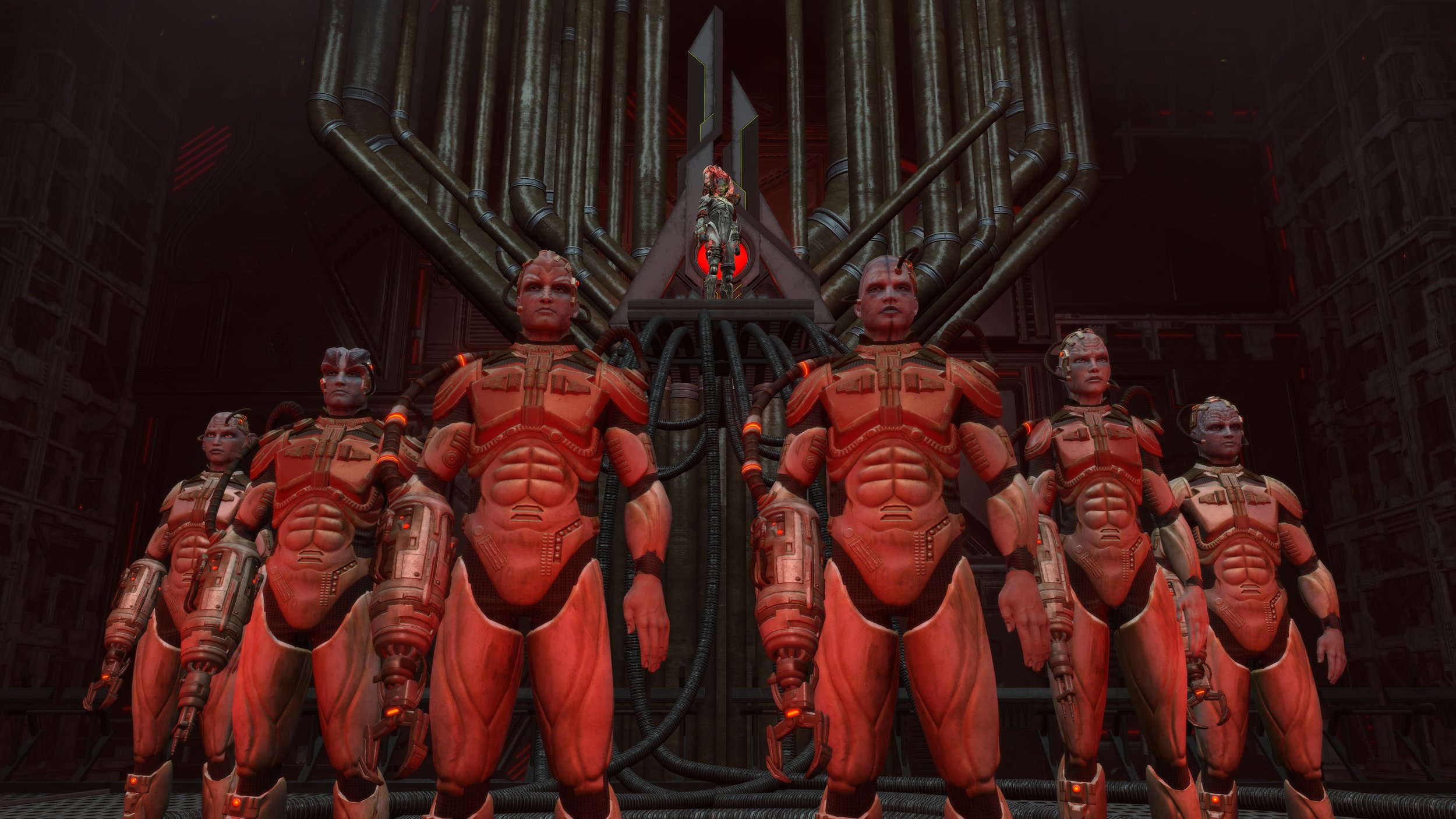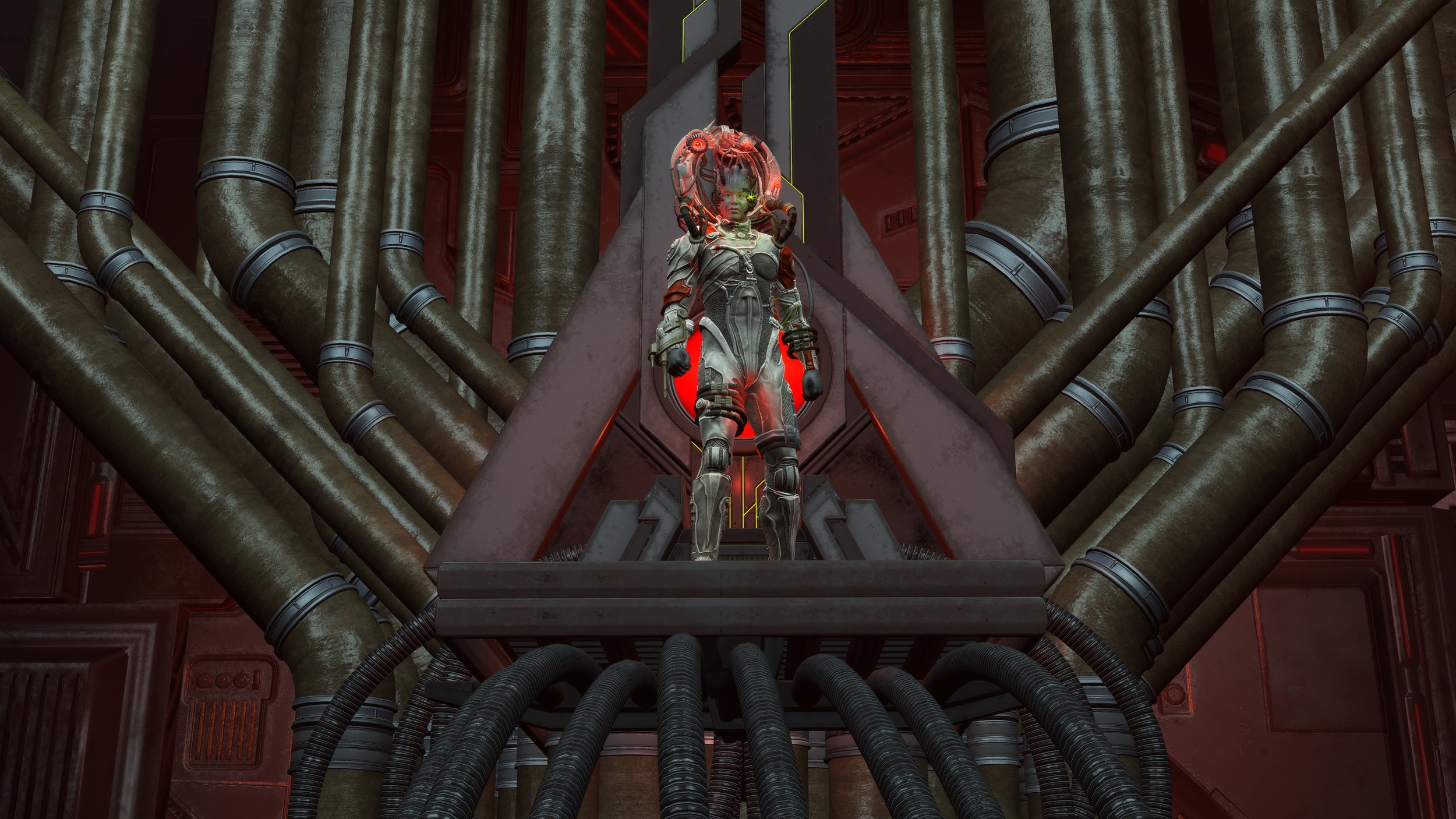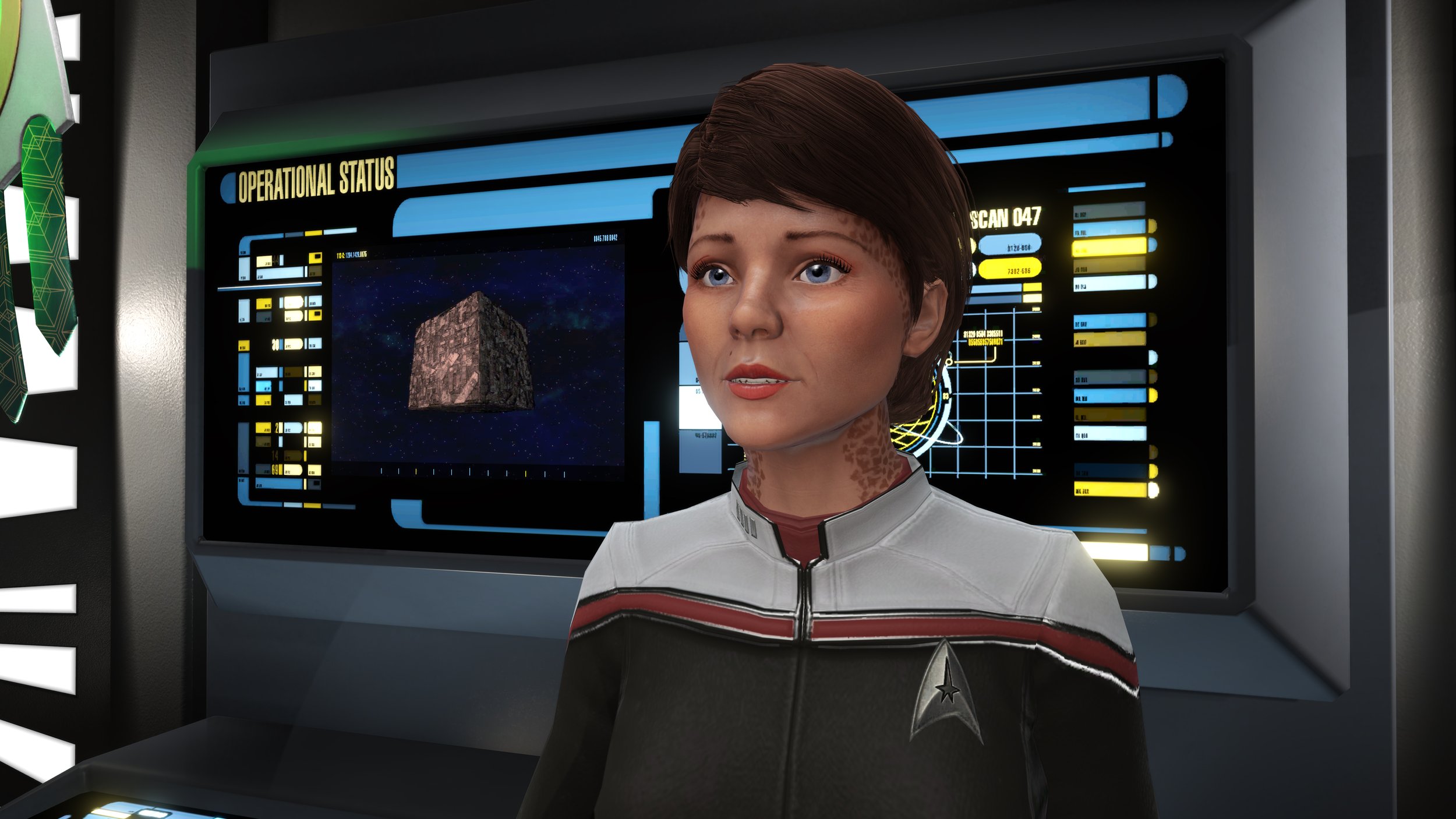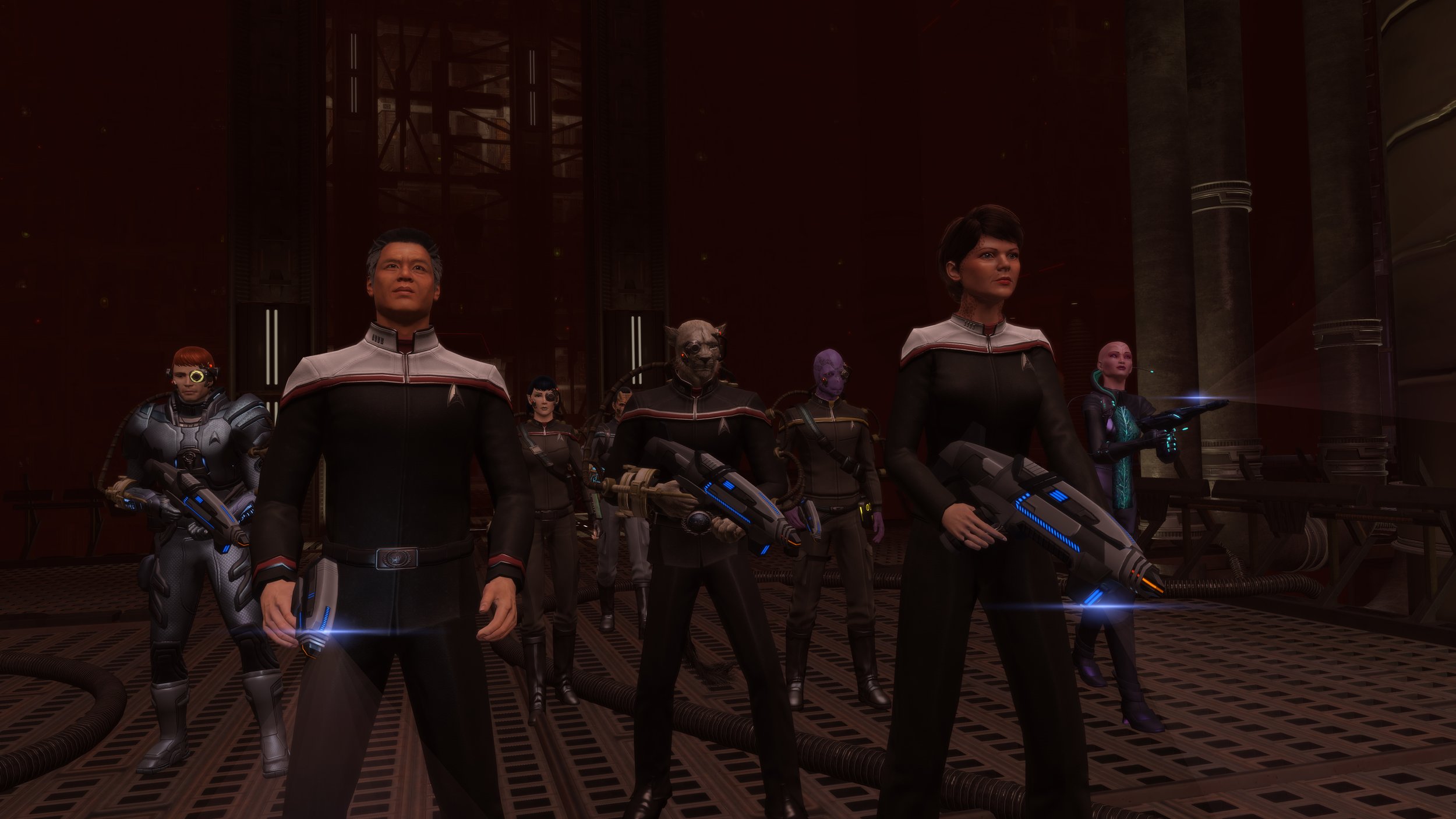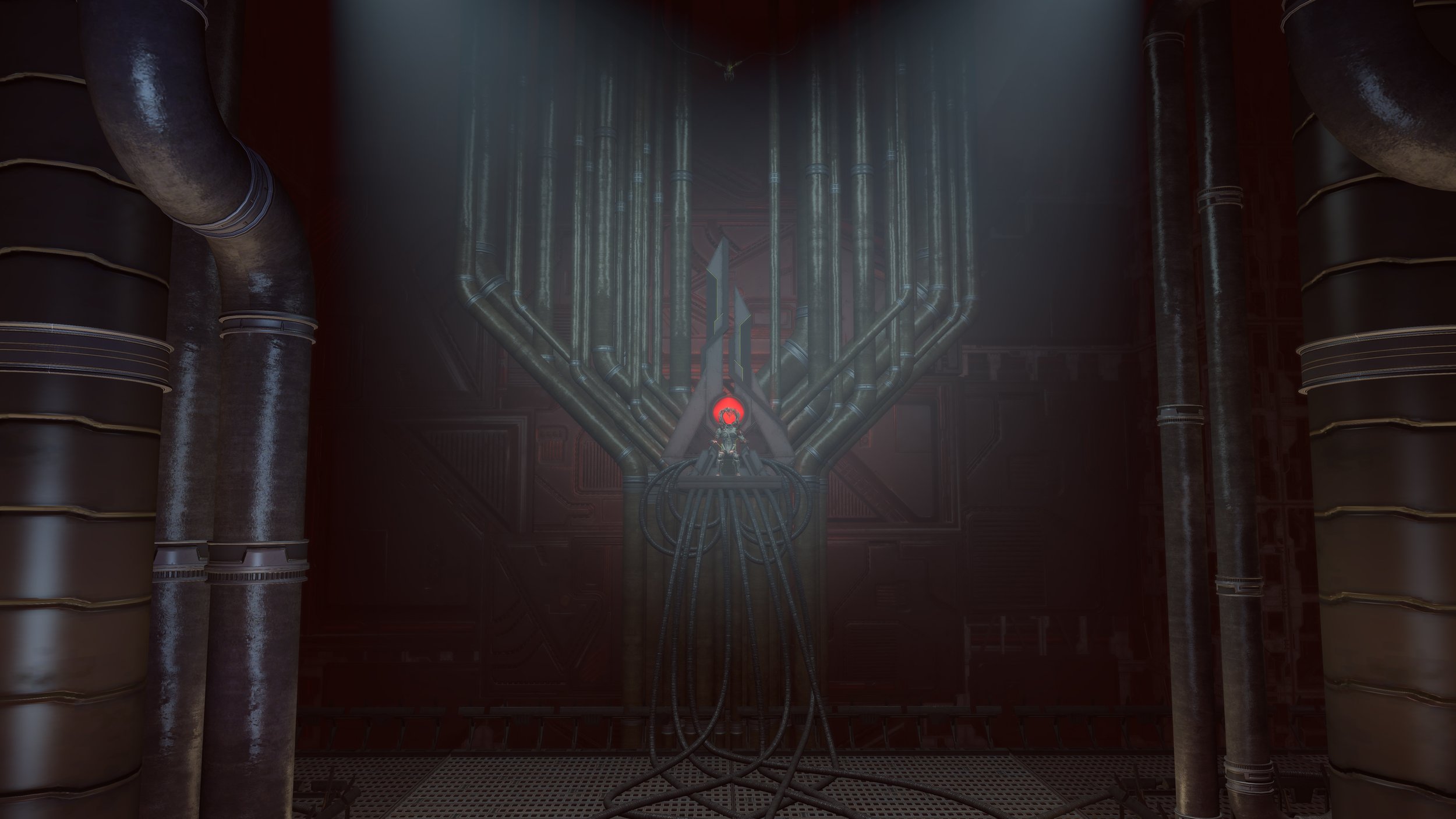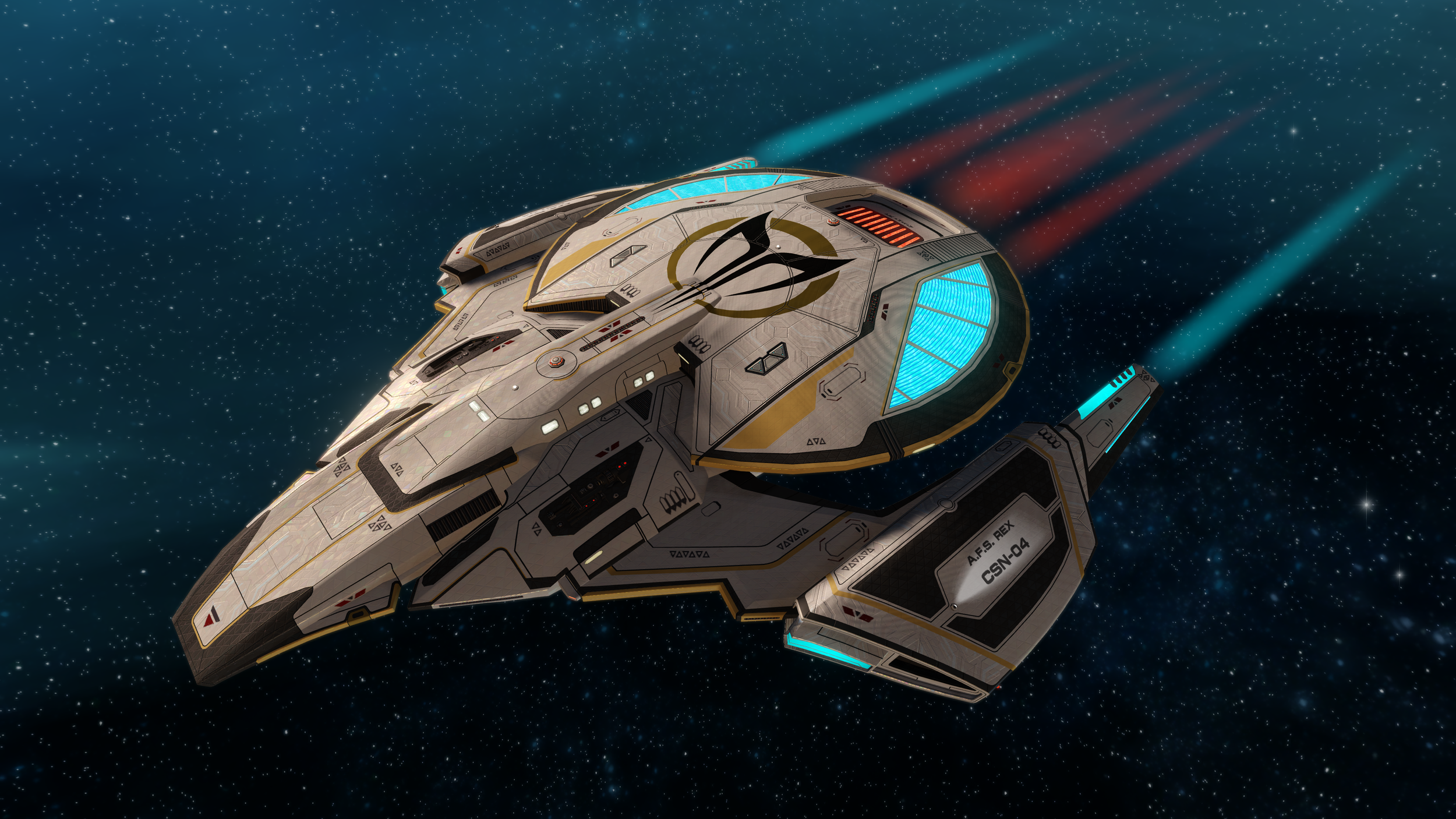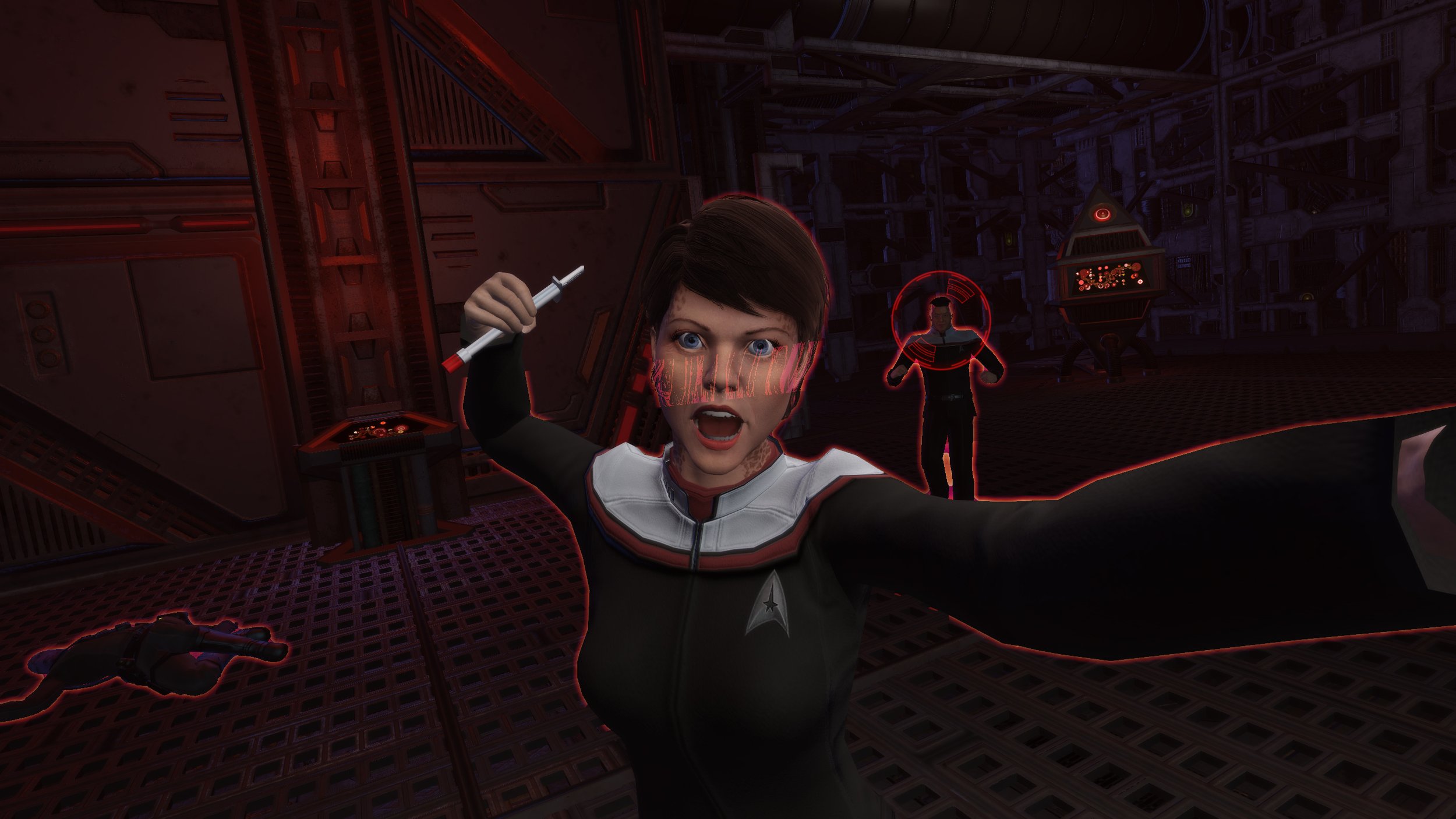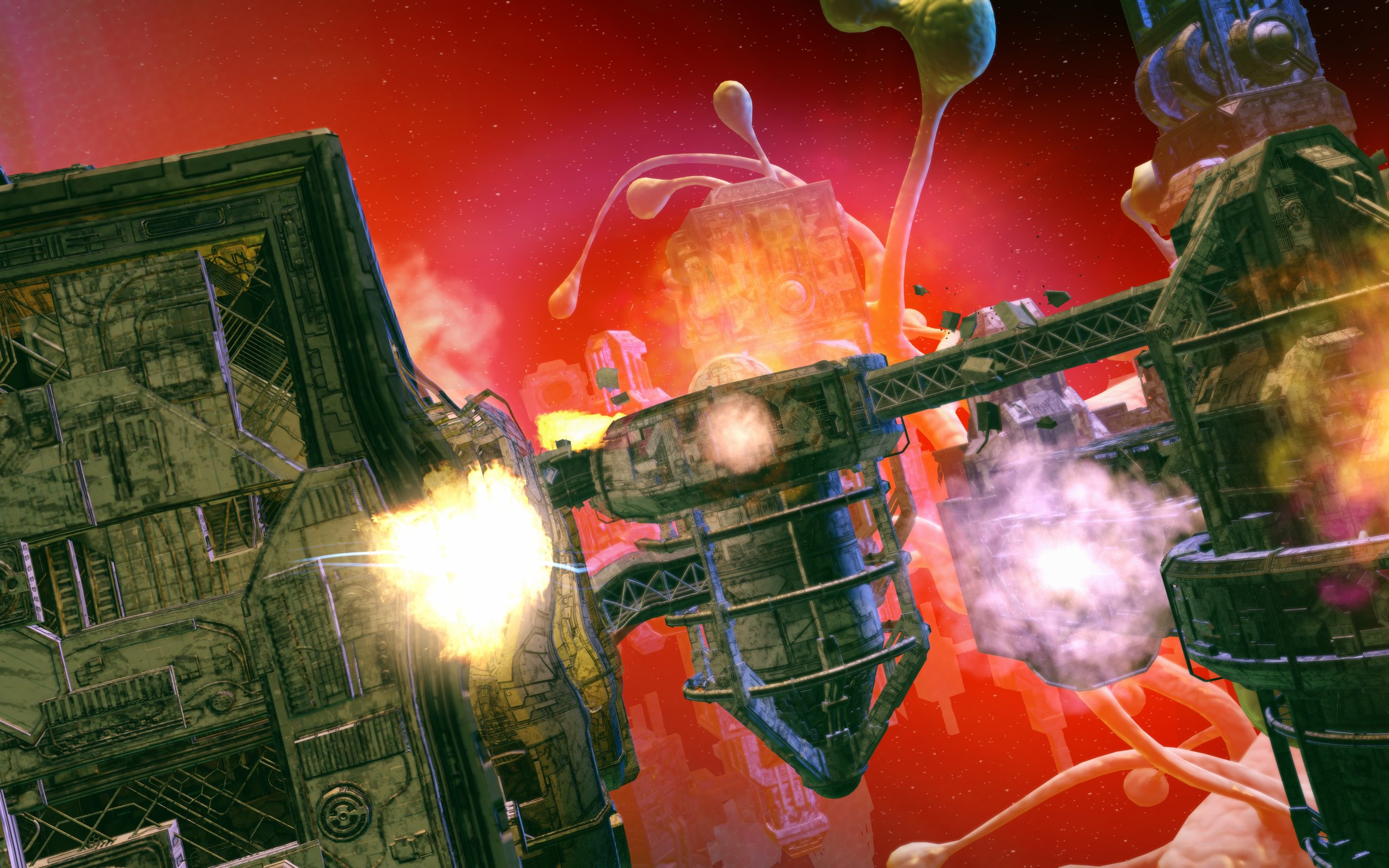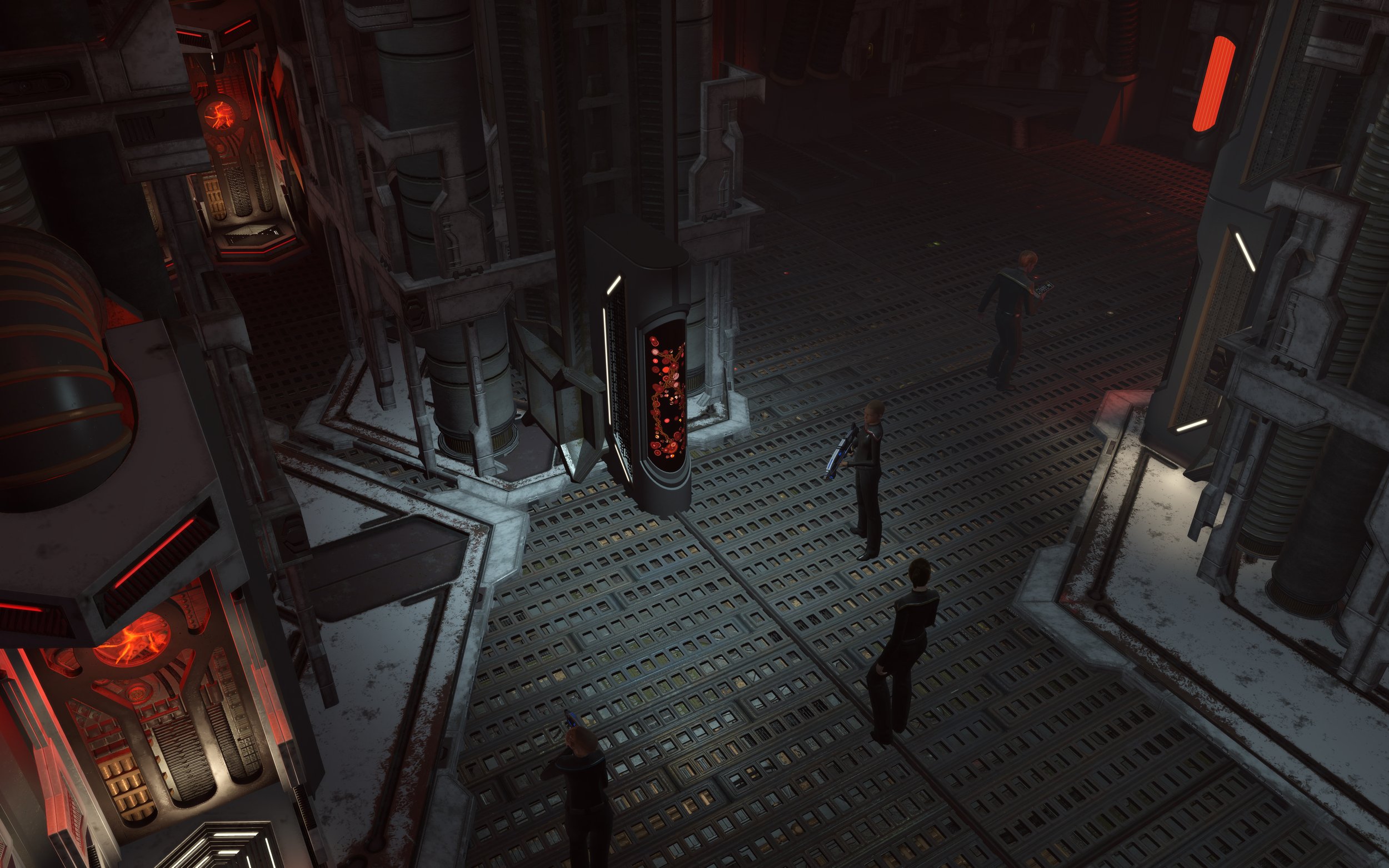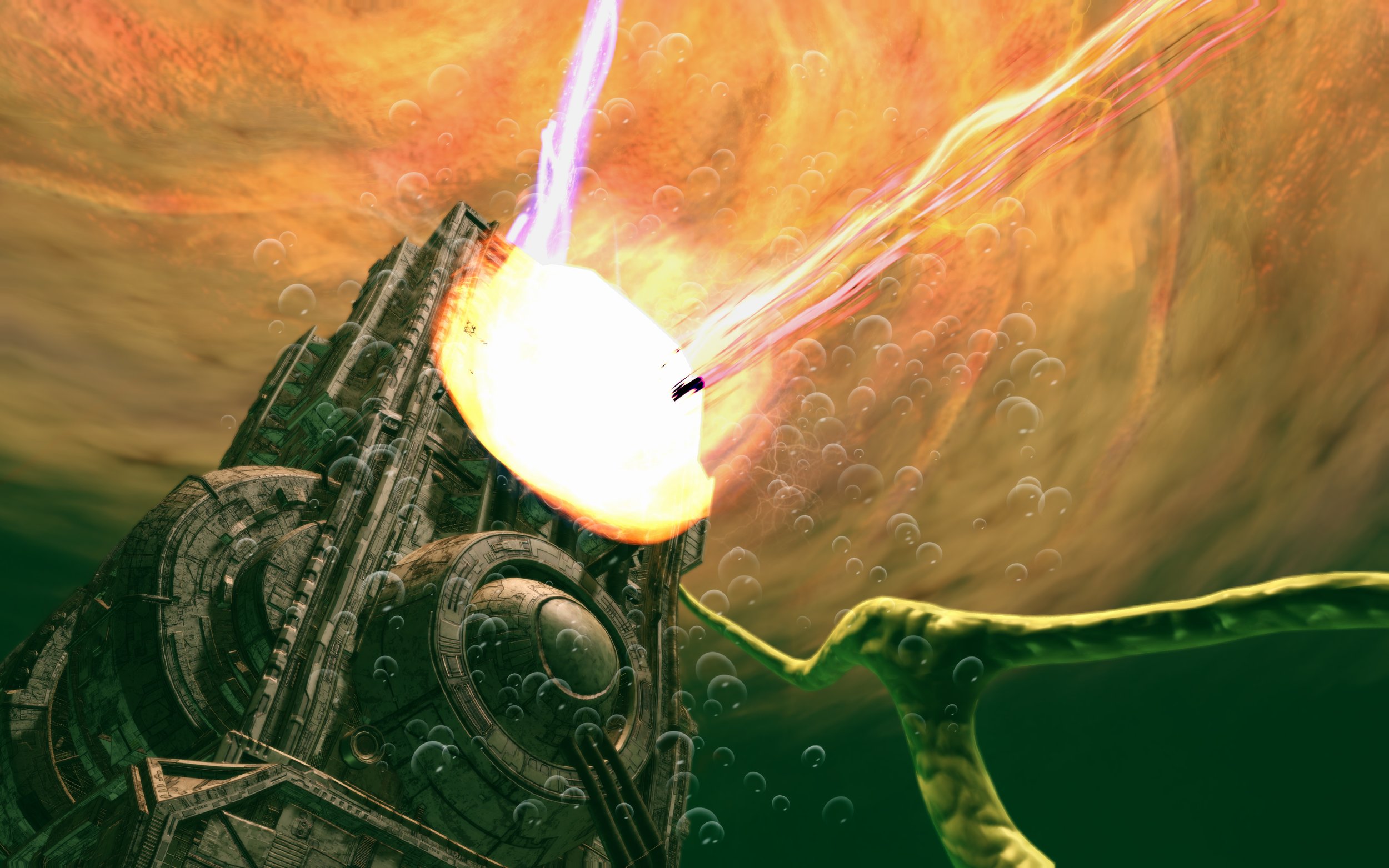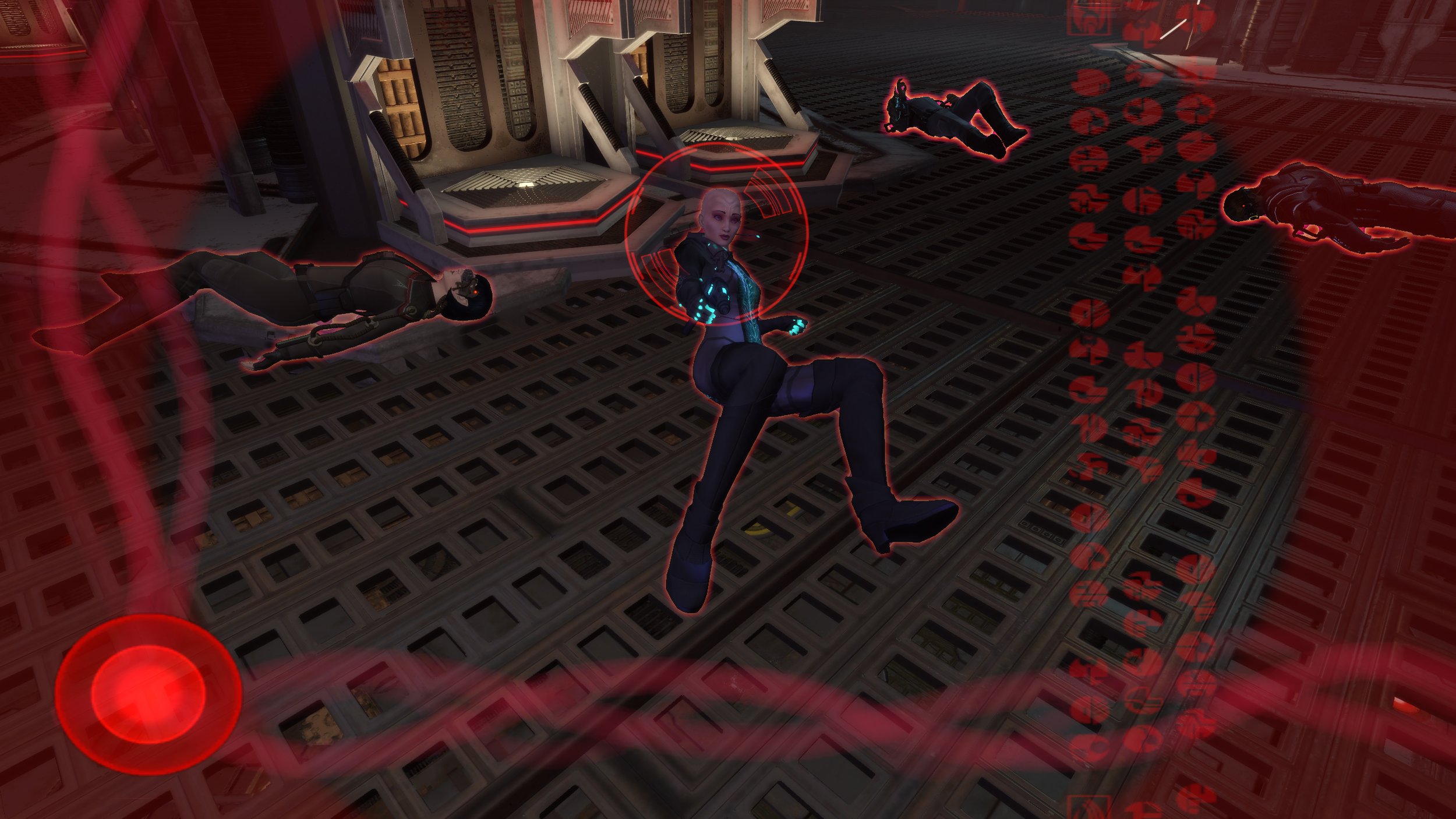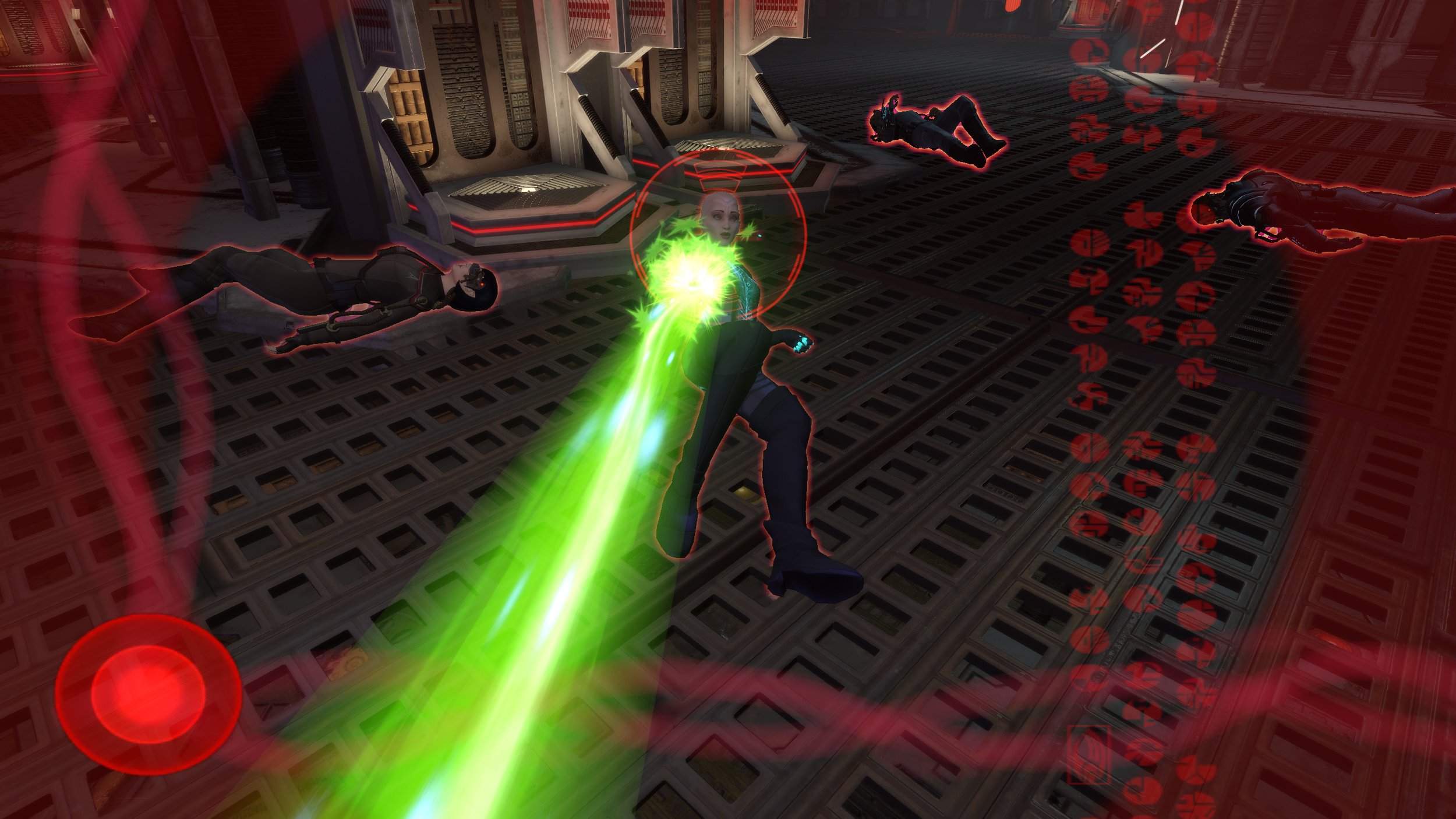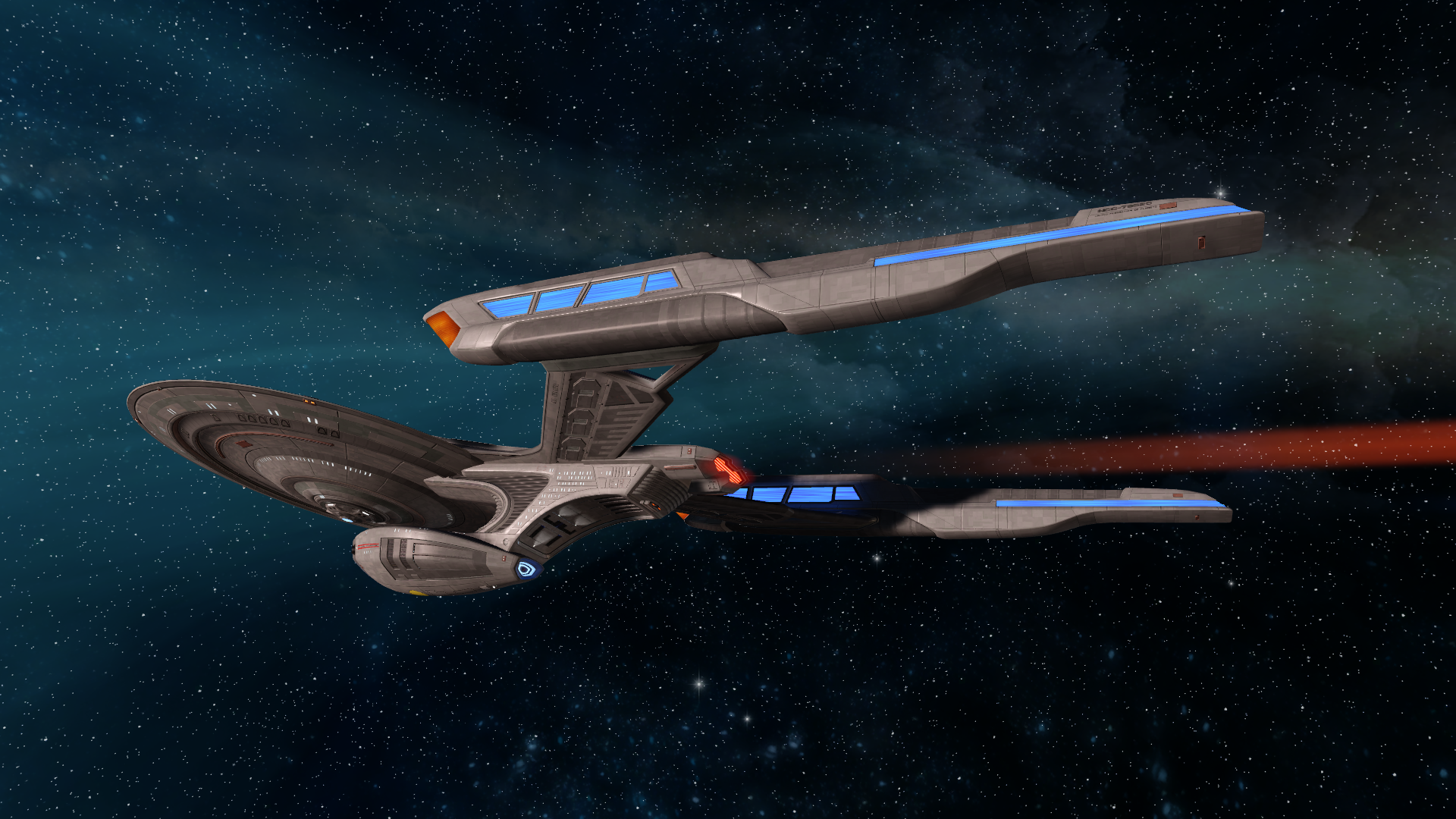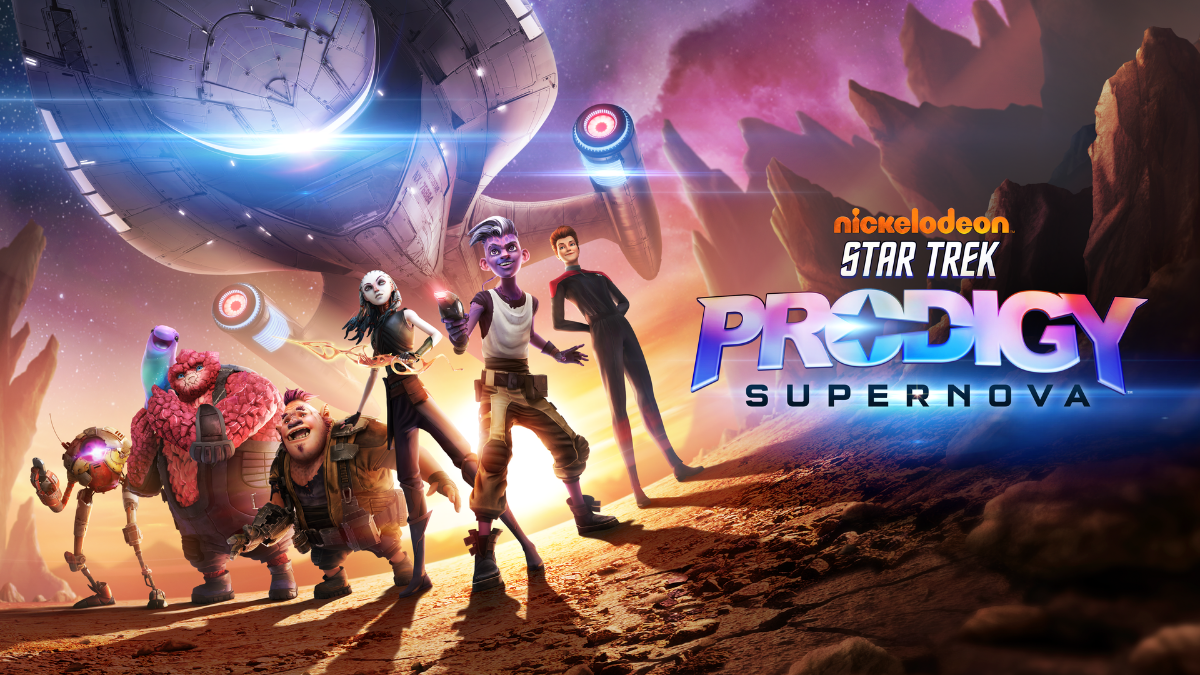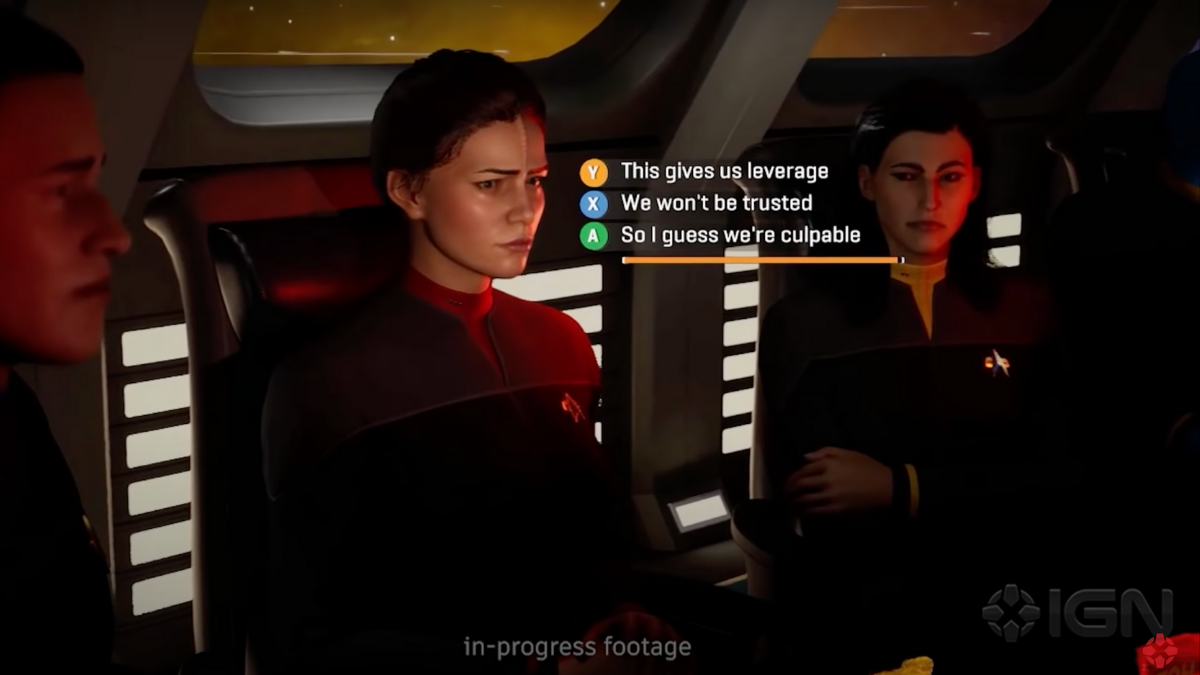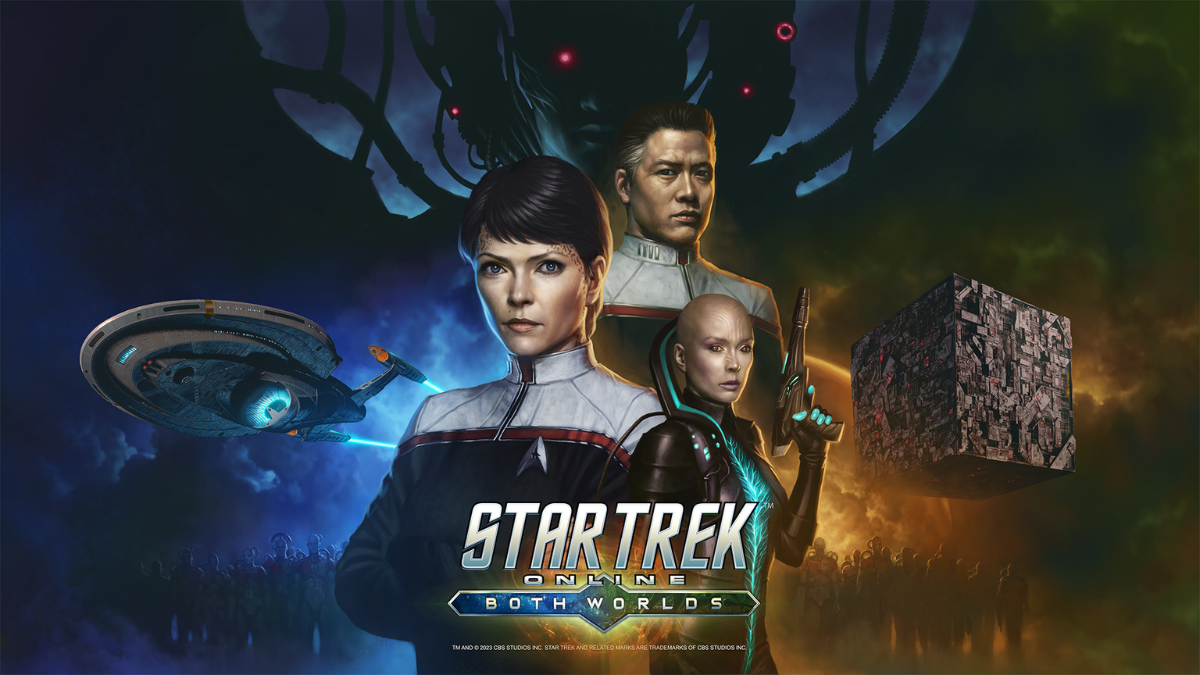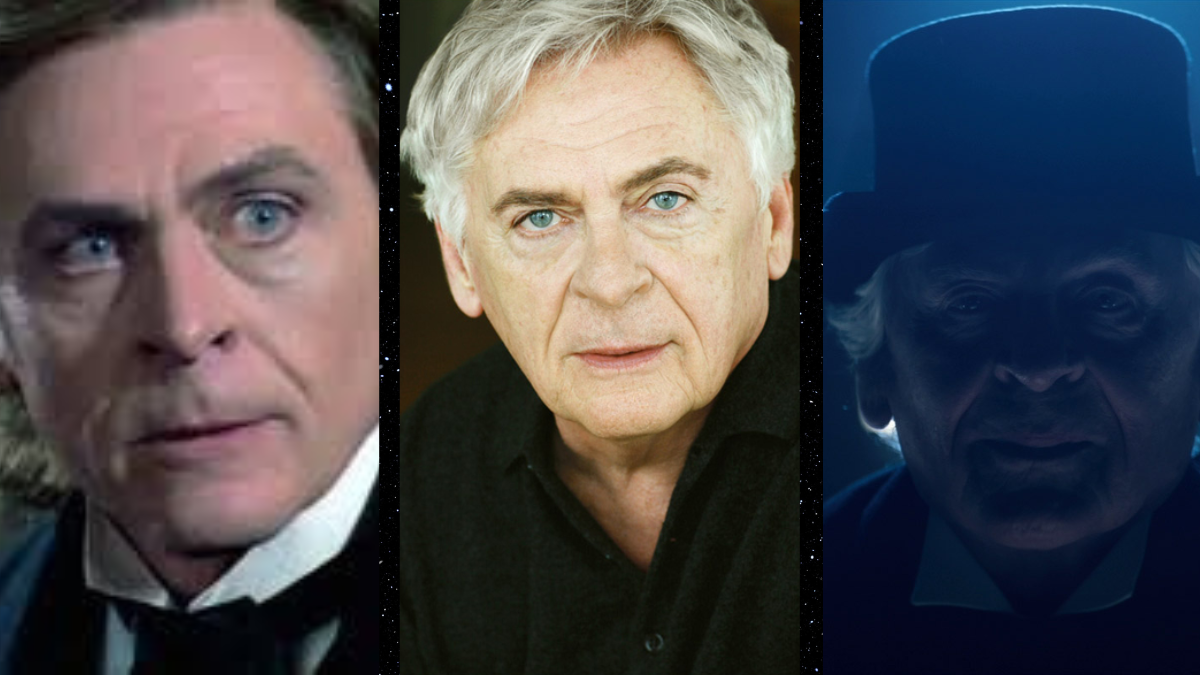EXCLUSIVE: Art Director Thomas Marrone Peels Back the Curtain on Making STAR TREK ONLINE

Image: Gearbox Publishing.
Star Trek Online has been around for 14 years, and we’ve covered the Massive Multiplayer Online Role Playing Game (MMORGP) since we began. Not only do they coming out with new seasons and events on a regular basis, but the art team was invited to submit design ideas to the team of Star Trek: Picard, including the much-lauded USS Enterprise-F. I had an opportunity to corner STO’s Art Director to find out what his influences are, how their collaboration with PIC came about, and what the future holds for the game. We also got our hands on some exclusive screenshots from STO’s latest season, “Both Worlds.”
DAILY STAR TREK NEWS: Have you always been a Star Trek fan?
THOMAS MARRONE: I grew up with Star Trek! My mom watched it during its original run in the ‘60s, and had it on when I was a kid. The exciting adventure, brave characters, and majestic U.S.S. Enterprise caught my imagination as a kid and never let go. “My” Star Trek was Star Trek: The Next Generation, and I would often weasel my way into staying up past my bedtime to watch it on first run syndication.
DSTN: How long have you been STO's art director?
TM: I’ve worked on Star Trek Online for over 13 years now. I started at Cryptic in late 2010, and then moved over to the team in early 2011. My career saw me start out as a Graphic Designer, then a UI Artist, then a Ship Artist, then Ship Art/UI Lead. In February 2022 I became Associate Art Director under mentorship of Art Director Bill Yeatts. I learned a lot from Bill and took over as the Art Director for the game in November 2022.
DSTN: What is it about space that inspires you and what is it about science fiction that interests you?
TM: When you look up at the night sky, you are looking at everything and nothing all at once. The concept of outer space is hard for us to wrap our brains around but ultimately, I think it represents a new frontier, an infinite unknowable ocean with unlimited possibilities. It stokes the imagination and inspires us to be smarter and more creative than we have ever been to meet the challenge of discovery waiting for us. Science fiction gives anyone the tools to explore this frontier from the safety of their arm chair or couch. It lets us imagine a million possible futures and pitfalls, reflect on our strengths and weaknesses, and ultimately prepares us for the real future waiting for us in that vast unknown.
DSTN: How big is your art team? Do they have any specialties?
TM: Most game teams have artists who specialize in a certain discipline. We have a few environment artists, a ship artist, two FX artists, two Character artists, an animator, and get support from people external to the team as well.
DSTN: What does your typical day look like and what is the process for you and your team from when you get a script for a season to when it actually releases to the public?
TM: As an Art Director, I am primarily a manager and facilitator. It is my job to enable the artists on my team to solve problems and make sure they have everything they need to make art. To do that, it requires a lot of communication, so most of my time is in meetings of some kind or another.
As for our process, it takes place over the course of months with many steps for each discipline. Generally, though, it starts with a brainstorm where various stakeholders talk about ideas they’d like to see in upcoming content. Then, the content or systems designer who is making the thing will go off and synthesize those rough ideas into a plan we call a pitch. They’ll present their pitch at a meeting to get buyoff from everyone else.
After that happens, the real work of building the asset or mission can begin. The various stakeholders will contribute to the effort at different stages as appropriate to the process. Along the way you have weekly playtests where leads and designers play the content in progress and offer feedback. For the art team, we review artists’ work weekly as well to make sure everything is on track and aligns with our vision for the release.
Towards the end of the development cycle, we will be playtesting often and the feedback will get more and more specific as we play, trying to make sure the end result is as polished as it can be. Generally, we spend about 12 weeks on a large content release from start to finish.
DSTN: Has your approach to the look of STO evolved since you started working on it?
TM: As an artist you always want to be improving. My conception of what STO can and should look like has evolved over the years, as it’s important for us to try to stay relevant even though the game itself is almost a decade and a half old. These days we are using more model and texture detail than we ever have, and we are trying to spend more time on each asset to imbue it with a high level of quality. Of course, this is the tradeoff: to make things look better, that also means you spend more time on them which in general means you make fewer things. We think, though, that Star Trek fans prefer our higher fidelity approach to an overload of quantity.
DSTN: Do you have a favorite in-game character or item to design and build?
TM: Ships are really my passion. I loved my time on the ship team designing and modeling ships, and I still spend a lot of my attention on them to make sure that the new ships we make these days match STO’s current style and quality bar.
DSTN: You and your team had the opportunity to contribute art to Star Trek: Picard season 3. How did that come about?
TM: As he was spinning up production on Star Trek: Picard season 2, Dave Blass [PIC’s Production Designer] reached out to me on Twitter. He had seen the work STO had been doing with our starships and wanted to talk to us about donating some time and art to the early 25th Century of Star Trek: Picard. We were thrilled to do so, of course! Senior Concept Artist Hector Ortiz and I ended up doing a bit of iteration on the design of the new U.S.S. Stargazer, and I also contributed a large selection of Star Trek Online starship models to VFX Supervisor Brian Tatosky so that they could fill out the fleet and starbase background shots.
The thing I am personally most proud of is, of course the Enterprise-F that makes a cameo in season 3! Of course, the Enterprise-F is a starship original to Star Trek Online, and it was an honor to have it included in an actual Star Trek television show.
When Dave asked for the ship, the model we had was 5 years old and not up to our current standard of detail, so I buckled down and built a brand new, high detail Enterprise-F model in three weeks! It was a mad dash but absolutely worth the effort when I saw the ship emerge from Spacedock to the iconic Star Trek fanfare.
The Enterprise-F in STAR TREK: PICARD...
...and in STAR TREK ONLINE.
DSTN: Back in 2010, there was an Art of Star Trek Online book that shipped out with the collector's edition of the game. Is there any chance of an updated version, maybe one that fans will be able to purchase?
TM: I would certainly love to make something like this, but we’d need an interested publisher who believed it would be a good investment for them to make.
DSTN: Are there any hints you can share about what's coming down the pike for STO?
TM: We just released our 14th Anniversary celebration, “Both Worlds,” on PC and that update will be coming to console in the future as well. Additionally, I’m very excited for some new starship designs coming to the game very soon, it is a collection of ships players have been crying wolf for for a long time.
T is the Managing Editor for Daily Star Trek News and a contributing writer for Sherlock Holmes Magazine and a Shakespeare nerd. He may have been the last professional Stage Manager to work with Leonard Nimoy, has worked Off-Broadway and regionally, and is the union Stage Manager for Legacy Theatre, where he is currently working with Julie Andrews. after which he’ll be working on Richard III at Elm Shakespeare Company.

